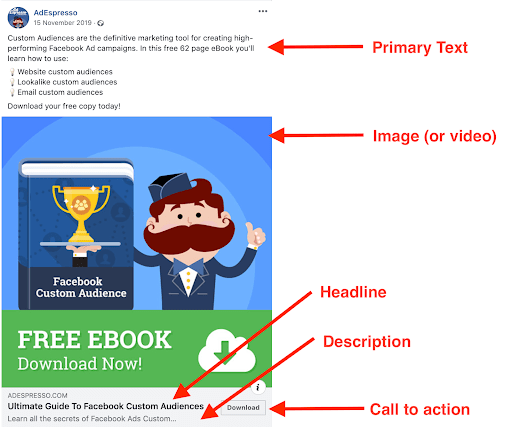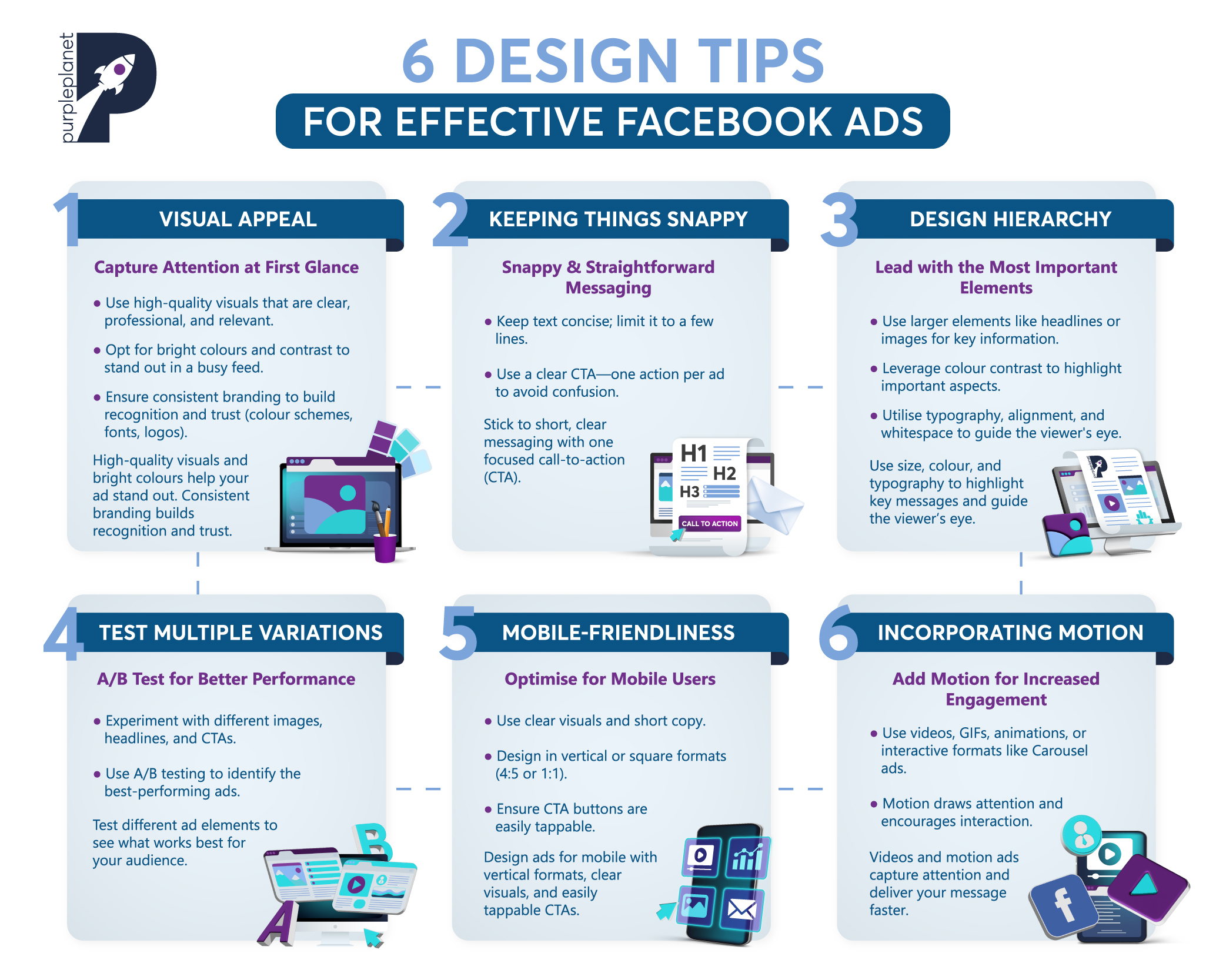Facebook Ads Guide: Mastering Advertising for Your Business
Facebook Ads offer businesses a powerful platform for targeting specific audiences, promoting products, and increasing conversions. Whether you are a small business owner or a marketer looking to expand your reach, understanding Facebook Ads is essential for success. This guide will walk you through everything you need to know, from setting up campaigns to analyzing your results.

What are Facebook Ads?
Facebook Ads are paid advertisements displayed on Facebook and its partner platforms, including Instagram, Messenger, and the Audience Network. These ads enable businesses to target users based on detailed criteria, including demographics, interests, and behaviors, helping you reach the right audience at the right time.
Facebook Ads can be in various formats, including image, video, carousel, and slideshow, depending on your goals and target audience. The flexibility in ad types and targeting makes Facebook Ads one of the most effective ways to advertise online.
Why Should You Use Facebook Ads?
Extensive Reach
Facebook boasts over 2.9 billion monthly active users, making it one of the largest social media platforms worldwide. Running ads on Facebook allows you to tap into this massive audience. Whether you’re targeting local consumers or global markets, Facebook’s reach ensures you can engage with potential customers wherever they are.
Advanced Targeting Options
One of the greatest advantages of Facebook Ads is its advanced targeting capabilities. You can target users based on:
-
Demographics: Age, gender, relationship status, job title, etc.
-
Interests: Hobbies, activities, and brands users engage with.
-
Behaviors: Purchase behavior, device usage, and travel habits.
By using these criteria, you can ensure your ads are shown to the most relevant audience.
Setting Up Your Facebook Ads Campaign
Creating a Facebook Ads campaign is straightforward, but it requires careful planning to achieve the best results. Here’s how you can set up your campaign:
1. Choose Your Campaign Objective
Before you create your ad, determine what you want to achieve. Facebook offers several objectives based on your business goals, such as:
-
Awareness: Reach more people and create brand awareness.
-
Consideration: Drive traffic, engagement, app installs, or video views.
-
Conversion: Increase sales or lead generation.
Your objective will guide the rest of your campaign setup, including your ad format, targeting, and budget.
2. Define Your Target Audience
Once you’ve selected your campaign objective, it’s time to define your target audience. Facebook allows you to target users based on:
-
Location: Target specific cities, countries, or even a radius around a location.
-
Age and Gender: Specify age ranges and gender preferences for your ads.
-
Interests and Behaviors: Use Facebook’s detailed targeting options to narrow your audience based on their interests, behaviors, and purchasing patterns.
The more specific your targeting, the more likely you are to reach the right customers.
3. Set Your Budget and Schedule
You can choose between two types of budgets:
-
Daily Budget: The amount you’re willing to spend per day.
-
Lifetime Budget: The total amount you’re willing to spend over the course of the campaign.
Additionally, you can set a start and end date for your campaign or let it run continuously.
4. Create Your Ad
Now comes the fun part—creating your ad! You have several options for ad formats:
-
Single Image Ads: Simple and effective. Use a high-quality image that resonates with your audience.
-
Video Ads: Great for storytelling and showcasing your product or service in action.
-
Carousel Ads: Allow users to swipe through multiple images or videos in a single ad.
-
Slideshow Ads: Lightweight video ads that load quickly on all devices.
Make sure your ad copy is concise, compelling, and relevant to your audience.
Facebook Ad Formats Explained
Image Ads
Image ads are the most common format on Facebook. They are simple and effective in delivering your message. Here are some tips for creating high-performing image ads:
-
Use high-quality, eye-catching images.
-
Keep your text to a minimum, focusing on the most important message.
-
Ensure your call-to-action (CTA) is clear and stands out.
Video Ads
Video ads allow you to tell a story, showcase a product, or highlight customer testimonials. Video ads are engaging and tend to generate more shares and comments.
-
Keep videos short (15-30 seconds) to maintain viewers’ attention.
-
Ensure the first few seconds are captivating to stop users from scrolling.
-
Include captions since many users watch videos with the sound off.
Carousel Ads
Carousel ads are a great way to showcase multiple products, features, or images in a single ad. Users can swipe through each card, making them more interactive.
-
Use carousel ads for product collections, tutorials, or event highlights.
-
Make sure each card has a clear focus to avoid overwhelming your audience.
Slideshow Ads
Slideshow ads are a lightweight alternative to video ads. They combine multiple images to create a short video-like experience.
-
Ideal for slow internet connections and areas with limited bandwidth.
-
Use simple transitions and high-quality images to tell your story.

How to Optimize Your Facebook Ads
Optimization is key to making your Facebook Ads more effective and cost-efficient. Here are some proven strategies:
1. A/B Testing
Test different versions of your ads to see what works best. You can test:
-
Ad copy: Experiment with different headlines, descriptions, and CTAs.
-
Images or Videos: Try different visuals to see which ones generate more engagement.
-
Audience targeting: Refine your audience targeting based on performance.
2. Use Retargeting
Retargeting allows you to show ads to people who have interacted with your business before, such as visiting your website or engaging with a previous ad. This helps you stay top-of-mind and increases the chances of conversion.
3. Monitor and Adjust Your Campaigns
Use Facebook’s Ads Manager to track your campaign’s performance. Keep an eye on key metrics like:
-
Click-Through Rate (CTR)
-
Cost Per Click (CPC)
-
Conversion Rate
Regularly adjust your ads based on performance data to improve your ROI.
Common Mistakes to Avoid
Facebook Ads can be a powerful tool, but many businesses make mistakes that hinder their success. Here are some common pitfalls to avoid:
-
Poor targeting: If your audience isn’t correctly defined, your ads will be shown to the wrong people.
-
Overcomplicated ads: Keep your message clear and simple. Avoid cluttering your ad with too much information.
-
Ignoring mobile users: A large portion of Facebook users access the platform via mobile devices. Make sure your ads are optimized for mobile viewing.
Facebook Ads Reporting and Analytics
One of the key benefits of Facebook Ads is its robust analytics. By using Facebook Ads Manager, you can access a range of performance metrics that help you understand your campaign’s effectiveness.
Some key metrics to track include:
-
Reach: The total number of people who saw your ad.
-
Impressions: The total number of times your ad was shown.
-
Engagement: The number of likes, comments, and shares your ad received.
-
Conversions: The number of actions taken, such as purchases or sign-ups.
Key Takeaway: Keep Testing and Refining
The best way to improve your Facebook Ads campaigns is through constant testing and refinement. Always monitor your results and experiment with different ad formats, targeting options, and creatives to optimize your campaigns for maximum impact.

Frequently Asked Questions (FAQs)
How much do Facebook Ads cost?
The cost of Facebook Ads depends on factors like your bid, audience size, and competition. On average, businesses pay between $0.50 and $2.00 per click.
How do I know if my Facebook Ads are successful?
Success can be measured by your campaign’s CTR, conversion rate, and ROI. Use Facebook Ads Manager to track these metrics and make data-driven decisions.
Can I run Facebook Ads with a small budget?
Yes! You can start with as little as $5 per day. With Facebook’s advanced targeting and budget options, you can make your small budget work effectively.
How long should I run my Facebook Ads?
It depends on your campaign goals and budget. However, running ads for at least a few weeks allows you to gather sufficient data and optimize for better performance.
Conclusion
Facebook Ads are a powerful tool for businesses looking to reach a specific audience, drive traffic, and increase sales. By following the steps outlined in this guide, you can create highly-targeted, optimized ads that deliver results. Don’t forget to regularly test and adjust your campaigns to ensure ongoing success.
For more information on digital marketing strategies and Facebook Ads best practices, visit our digital marketing resources.


